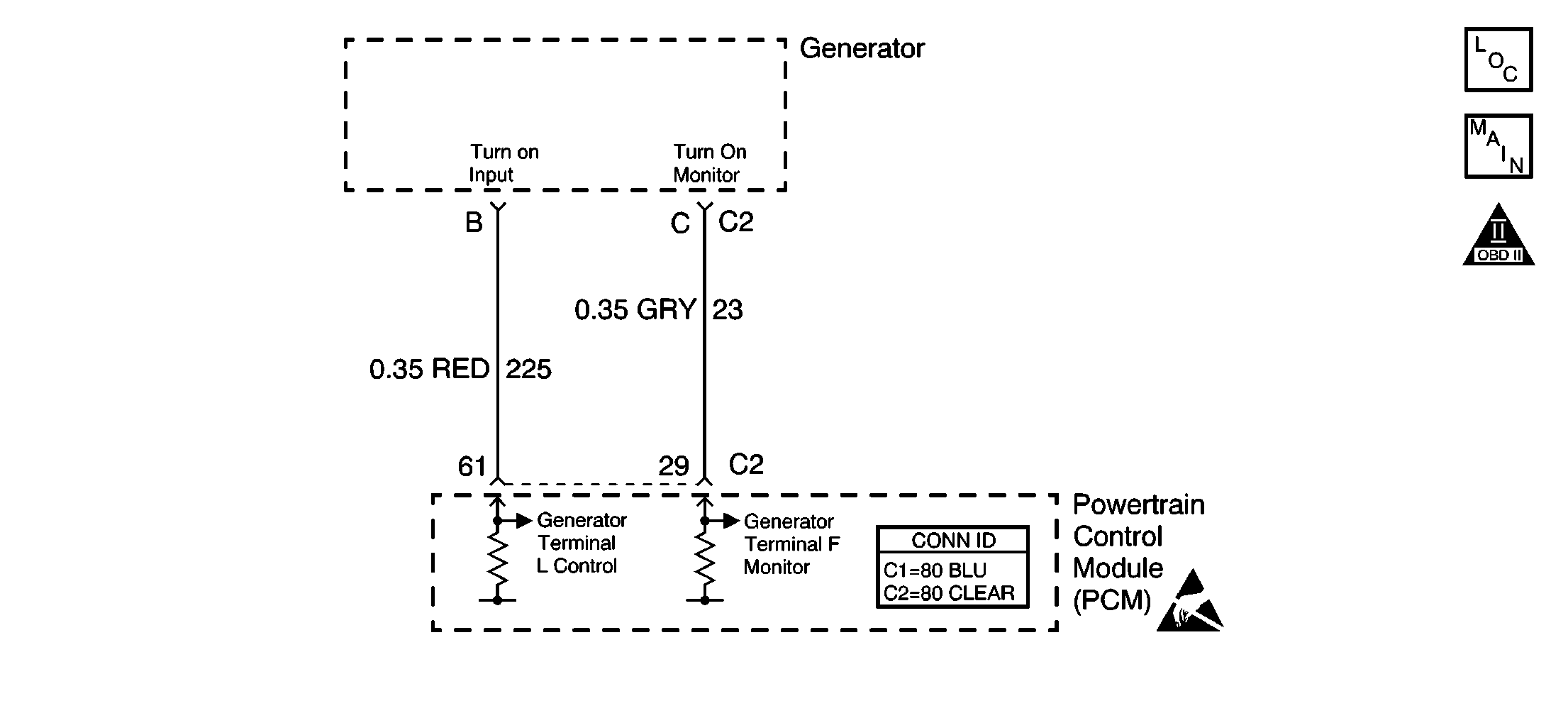
Circuit Description
The PCM monitors system voltage on the PCM ignition feed circuit. If the system voltage is out of tolerance, DTC P0560 will be set. When the conditions that set DTC P0560 are present, operation of some vehicle systems and components may be affected.
Conditions for Running the DTC
The engine is running.
Conditions for Setting the DTC
| • | The system voltage monitored at the PCM ignition feed circuit is less than 9 volts or more than 16 volts. |
| • | The above conditions are present for more than 25 seconds. |
Action Taken When the DTC Sets
The PCM stores conditions which were present when the DTC set as Failure Records only. This information will not be stored as Freeze Frame Records.
Conditions for Clearing the MIL/DTC
| • | The DTC becomes history when the conditions for setting the DTC are no longer present. |
| • | The history DTC clears after 40 malfunction free warm-up cycles. |
| • | The PCM receives a clear code command from the scan tool. |
Diagnostic Aids
Important:: Charging the battery with a battery charger while starting the engine may cause DTC P0560 to be set.
Check for the following conditions:
Important: Ensure the PCM engine grounds are secure and clean.
| • | A faulty connection at the PCM or the generator--Inspect the harness connectors for backed out terminals, improper mating, broken locks, improperly formed or damaged terminals, and faulty terminal to wire connections. Use a corresponding mating terminal to test for proper terminal tension. |
| • | Inspect the wiring harness for damage. If the harness appears to be OK, observe the ignition 1 voltage display on the scan tool while moving the connectors and wiring related to the PCM, the dash harness, and the engine harness. A change in the display will indicate the location of the malfunction. |
If DTC P0560 cannot be duplicated, reviewing the Failure Records vehicle mileage since the diagnostic test last failed may help determine how often the condition that caused the DTC to be set occurs. This may assist in diagnosing the condition.
Test Description
The numbers below refer the step numbers on the diagnostic table.
Step | Action | Values | Yes | No |
|---|---|---|---|---|
1 | Was the Powertrain On-Board Diagnostic (OBD) System Check performed? | -- | ||
2 | Is DTC P1635 also set? | -- | ||
3 |
Is the voltage within the specified range? | 12-15 V | ||
4 |
Does the scan tool indicate the DTC test failed this ignition? | -- | Go to Diagnostic Aids | |
5 |
Is the voltage within the specified range? | 12-15 V | ||
6 |
Is the voltage within the specified range? | 12-15 V | ||
7 |
Is the voltage approximately equal to the specified value with the Gen. L Term. commanded ON? | 5 V | ||
8 | Compare the Ignition 1 voltage displayed on the scan tool with the actual battery voltage as measured with the DMM. Is the Ignition 1 value approximately equal to the actual voltage? | -- | Go to Diagnostic Aids | |
9 |
Was a problem found? | -- | ||
10 |
Was a problem found? | -- | ||
11 |
Was a problem found? | -- | ||
12 |
Was a problem found? | -- | Go to Charging System Test in Engine Electrical | |
|
Important:: The replacement PCM must be programmed. Replace the PCM. Refer to Powertrain Control Module Replacement/Programming . Did you complete the repair? | -- | -- | ||
14 |
Is the voltage within the specified range? | 12-15 V | System OK |
